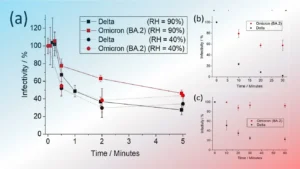Cyber security is the practice of protecting systems, networks, and programs from digital attacks. These cyberattacks or Cyber Threats are usually aimed at accessing, changing, or destroying sensitive information; extorting money from users via ransomware; or interrupting normal business processes.
- Concept of Cyber Threats
- Cyber Security: Types of Cyber Threats
- 01. Denial-of-service (DoS) and distributed denial-of-service (DDoS) attacks:
- 02. Man-in-the-middle (MitM) attack:
- 03. Phishing and spear phishing attacks:
- 04. Drive-by attack:
- 05. Password attack:
- 06. SQL injection attack:
- 07. Cross-site scripting (XSS) attack:
- 08. Eavesdropping attack:
- 09. Malware attack:
- 10. Ransomware:
- Sources of Cyber Threats
Concept of Cyber Threats
- Cyber threat is defined as any identified effort directed toward access to, exfiltration of, manipulation of, or impairment to the integrity, confidentiality, security, or availability of data, an application, or a federal system, without lawful authority.
- A cyber threat can be unintentional and intentional, targeted or non-targeted, and can come from a variety of sources, including foreign nations engaged in espionage and information warfare, criminals, hackers, virus writers, and disgruntled employees and contractors working within an organization.
- Unintentional threats can be caused by inattentive or untrained employees, software upgrades, maintenance procedures and equipment failures that inadvertently disrupt computer systems or corrupt data.
- Intentional threats include both targeted and nontargeted attacks.
- A targeted attack is when a group or individual specifically attacks a critical infrastructure system.
- A non-targeted attack occurs when the intended target of the attack is uncertain, such as when a virus, worm, or malware is released on the Internet with no specific target.
- Repeatedly identified as the most worrisome threat is the “insider” – someone legitimately authorized access to a system or network.
Cyber Security: Types of Cyber Threats
01. Denial-of-service (DoS) and distributed denial-of-service (DDoS) attacks:
A denial-of-service attack overwhelms a system’s resources so that it cannot respond to service requests. A DDoS attack is also an attack on a system’s resources, but it is launched from a large number of other host machines that are infected by malicious software controlled by the attacker.
02. Man-in-the-middle (MitM) attack:
A MitM attack occurs when a hacker inserts itself between the communications of a client and a server.
03. Phishing and spear phishing attacks:
Phishing attack is a type of email attack in which an attacker tries to find sensitive information of users in a fraudulent manner through electronic communication by pretending to be from a related trusted organization. Spear phishing targets specific organizations or individuals, and seeks unauthorized access to confidential data.
04. Drive-by attack:
Drive-by download attacks are a common method of spreading malware. Hackers look for insecure websites and plant a malicious script into HTTP or PHP code on one of the pages. This script might install malware directly onto the computer of someone who visits the site, or it might redirect the victim to a site controlled by the hackers.
05. Password attack:
Brute-force password guessing means using a random approach by trying different passwords and hoping that one works.
06. SQL injection attack:
SQL injection has become a common issue with database-driven websites.
07. Cross-site scripting (XSS) attack:
XSS attacks use third-party web resources to inject malicious JavaScript into a website’s database.
08. Eavesdropping attack:
It occurs through the interception of network traffic. By eavesdropping, an attacker can obtain passwords, credit card numbers and other confidential information that a user might be sending over the network.
09. Malware attack:
Malwares can be described as unwanted software that is installed in a system without consent. It can attach itself to legitimate code and propagate or replicate itself across the internet.
10. Ransomware:
Ransomware is a type of malware attack in which the attacker locks or encrypts the victim’s data and threatens to publish or block access to data unless a ransom is paid.
Sources of Cyber Threats
Botnet operators:
Botnet operators use a network, or botnet, of compromised, remotely controlled systems to coordinate attacks and to distribute phishing schemes, spam, and malware attacks. The services of these networks are sometimes made available on underground markets.
Criminal groups:
Criminal groups seek to attack systems for monetary gain. Specifically, organized criminal groups use spam, phishing, and spyware/malware to commit identity theft and online fraud. International corporate spies and criminal organizations also pose a threat through their ability to conduct industrial espionage and large-scale monetary theft and to hire or develop hacker talent.
Foreign nation states:
Foreign intelligence services use cyber tools as part of their information gathering and espionage activities. Also, several nations are aggressively working to develop information warfare doctrine, programs, and capabilities. Such capabilities enable a single entity to have a significant and serious impact by disrupting the supply, communications, and economic infrastructures that support military power.
Hackers:
Hackers break into networks for revenge, stalking others, and monetary gain. While gaining unauthorized access once required a fair amount of skill or computer knowledge, hackers can now download attack scripts and protocols from the Internet and launch them against victim sites.
Hacktivists:
Those who make politically motivated attacks on publicly accessible web pages or e-mail servers. These groups and individuals overload e-mail servers and hack into websites to send a political message.
Insiders:
The disgruntled insider, working from within an organization, is a principal source of computer crimes. Insiders may not need a great deal of knowledge about computer intrusions because their knowledge of a victim system often allows them to gain unrestricted access to cause damage to the system or to steal system data. The insider threat also includes contractor personnel.
International corporate spies:
International corporate spies pose a threat through their ability to conduct economic and industrial espionage and large-scale monetary theft and to hire or develop hacker talent.
Phishers:
Individuals, or small groups, execute phishing schemes in an attempt to steal identities or information for monetary gain. Phishers may also use spam and spyware/malware to accomplish their objectives.
Spammers:
Individuals or organizations distribute unsolicited e-mail with hidden or false information in order to sell products, conduct phishing schemes, distribute spyware/malware, or attack organizations (i.e., denial of service attack).
Spyware/malware authors:
Individuals or organizations with malicious intent carry out attacks against users by producing and distributing spyware and malware. Several destructive computer viruses and worms have harmed files and hard drives, including the Melissa virus, the Explore.Zip worm, the CIH (Chernobyl) virus, Nimda worm, Code Red, Slammer worm, and Blaster worm.
Terrorists:
Terrorists conduct cyber-attacks to destroy, infiltrate, or exploit critical infrastructure to threaten national security, compromise military equipment, disrupt the economy, and cause mass casualties.
Note:
The above information is only for knowledge. We do not support hacking.
Also Read:
Basic Concepts on Nanotechnology, Nanoscale, Nanomaterials, Nanoscience and Nanoengineering
What is Nanoscale objects and its Behavior












1 thought on “Cyber Security – Concept, Types, Sources of Cyber Threats”